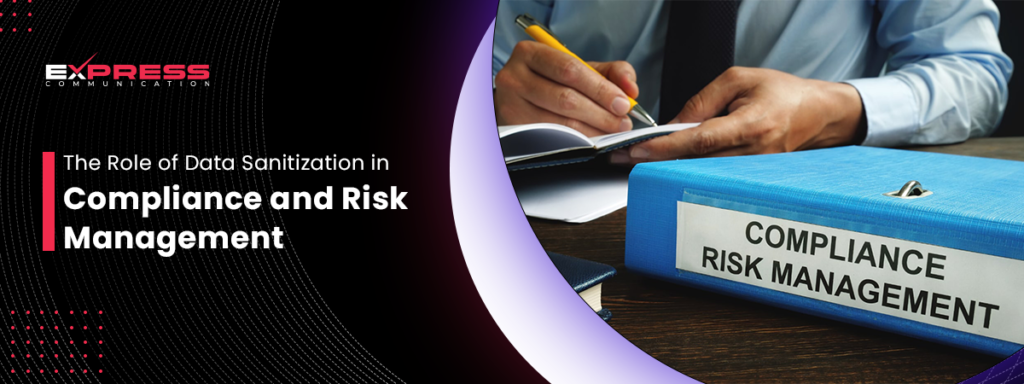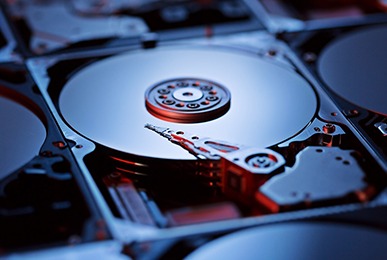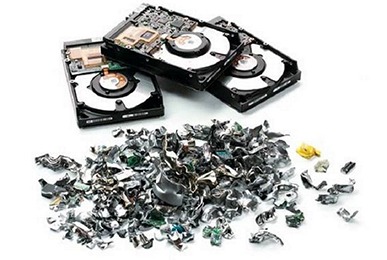
Have you ever wondered what happens to all the old data stored on company computers and servers? Think about all the sensitive information like customer details, financial records, and confidential emails. What happens to this data when it’s no longer needed or when devices are retired? This is where data sanitization comes in, playing a crucial role in compliance and risk management.
Table of Contents
What is Data Sanitization?
Data sanitization refers to the process of deliberately, permanently, and irreversibly removing or destroying the data stored on a memory device to ensure it cannot be recovered. There are various methods of data sanitization, including data wiping, degaussing, and physical destruction. Each method is chosen based on the type of data and the storage device in question.
Why is Data Sanitization Important?
Data sanitization is crucial because it helps protect sensitive information from unauthorized access. Imagine if old hard drives from a bank were disposed of without proper data sanitization. Anyone could potentially access the personal and financial information of the bank’s customers, leading to identity theft, financial loss, and other severe consequences.
Additionally, data sanitization is essential for complying with various data protection laws and regulations. Organizations must ensure that they handle data responsibly and securely to avoid legal penalties and maintain their reputation.
Compliance with Data Protection Regulations
Data protection regulations like the General Data Protection Regulation (GDPR) in Europe and the California Consumer Privacy Act (CCPA) in the United States set strict guidelines on how organizations should manage personal data. One of the key aspects of these regulations is ensuring that data is securely destroyed when it is no longer needed.
Failure to comply with these regulations can result in hefty fines and legal action. Therefore, data sanitization is not just a best practice but a legal requirement for many organizations. By implementing proper data sanitization procedures, companies can demonstrate their commitment to data protection and compliance.
Methods of Data Sanitization
There are several methods of data sanitization, each with its advantages and disadvantages. Here are the most common ones:
- Data Wiping: This method involves overwriting the existing data with random characters. Specialized software is used to ensure that the original data cannot be recovered. Data wiping is effective for many types of storage devices, including hard drives and solid-state drives.
- Degaussing: Degaussing uses a high-powered magnet to disrupt the magnetic fields on a storage device, effectively erasing all the data. This method is typically used for magnetic storage devices like hard drives and tapes. However, degaussing can render the device unusable, which means it cannot be reused.
- Physical Destruction: This method involves physically destroying the storage device, making it impossible to retrieve any data. Shredding, crushing, or incinerating are common physical destruction techniques. This method is considered the most secure but also the most destructive, as the device cannot be reused.
Benefits of Data Sanitization
Data sanitization offers several benefits for organizations, including:
- Enhanced Security: By securely erasing data, organizations can prevent unauthorized access and reduce the risk of data breaches. This helps protect sensitive information and maintain customer trust.
- Compliance with Regulations: Proper data sanitization helps organizations comply with data protection laws and avoid legal penalties. It demonstrates a commitment to data privacy and security.
- Risk Management: Data sanitization is a crucial part of an organization’s risk management strategy. It helps identify and mitigate potential risks associated with data leaks or breaches.
- Cost Savings: By reusing storage devices after data sanitization, organizations can save money on purchasing new equipment. This also supports environmental sustainability by reducing electronic waste.
Challenges in Data Sanitization
While data sanitization is essential, it is not without its challenges. Some of the common challenges include:
- Complexity of Storage Devices: Modern storage devices, especially solid-state drives (SSDs), have complex architectures that make data sanitization more challenging. Ensuring complete data removal from these devices requires specialized techniques and tools.
- Volume of Data: Organizations often deal with vast amounts of data, making the process of sanitization time-consuming and resource-intensive. Managing this effectively requires robust processes and automation.
- Evolving Regulations: Data protection regulations are continually evolving, and organizations must stay updated to ensure compliance. This requires constant monitoring and adjustment of data sanitization practices.
- Data Recovery Technologies: As data recovery technologies advance, the risk of partially sanitized data being recovered increases. Organizations must use the most up-to-date and effective sanitization methods to mitigate this risk.
Implementing Data Sanitization in Your Organization
To effectively implement data sanitization, organizations should follow these steps:
- Assess Your Needs: Determine the types of data you handle, the storage devices used, and the relevant regulatory requirements. This will help you choose the appropriate sanitization methods.
- Develop a Policy: Create a data sanitization policy that outlines the procedures and responsibilities for securely erasing data. Ensure this policy is aligned with regulatory requirements and industry best practices.
- Use Tools: Utilize trusted data sanitization tools and software to ensure complete and secure data removal. Regularly update these tools to stay ahead of advancements in data recovery technologies.
- Train Your Staff: Educate your employees on the importance of data sanitization and how to follow the established procedures. Regular training sessions can help reinforce the policy and address any questions or concerns.
- Document the Process: Keep detailed records of all data sanitization activities, including the methods used, the devices sanitized, and the personnel involved. This documentation can serve as proof of compliance and support audits or investigations.
- Audit and Review: Regularly audit your data sanitization processes to ensure they are effective and compliant with regulations. Make necessary adjustments based on audit findings and evolving best practices.
Conclusion
Data sanitization plays a vital role in compliance and risk management. By securely erasing sensitive information, organizations can protect themselves from data breaches, comply with data protection regulations, and manage risks effectively. Implementing robust data sanitization practices requires careful planning, the right tools, and ongoing commitment to security and compliance. In a world where data breaches and cyber threats are becoming increasingly common, data sanitization is an essential practice for any organization handling sensitive information.





